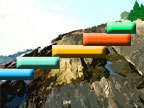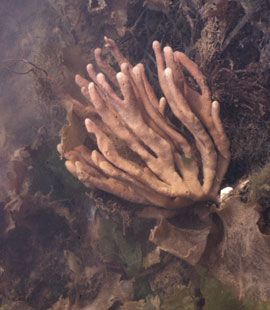 |
 |
|||||||||||||||
|
Haliclona oculata or the finger sponge is a branching species. Generally found in deeper subtidal areas, the finger sponge is commonly found washed up after strong storms. All sponges need a hard substrate to settle and grow on. Rock is the most common substrate, but less permanent substrates are also available including shells, kelp blades, docks, floats, and boat hulls. Sponges are generally hermaphroditic, which means they produce both sperm and eggs. Sperm from neighboring sponges are drawn in to fertilize eggs, which become larvae that swim away to colonize new areas. |
||||||||||||||||
Did you know... |
||||||||||||||||
|
||||||||||||||||

